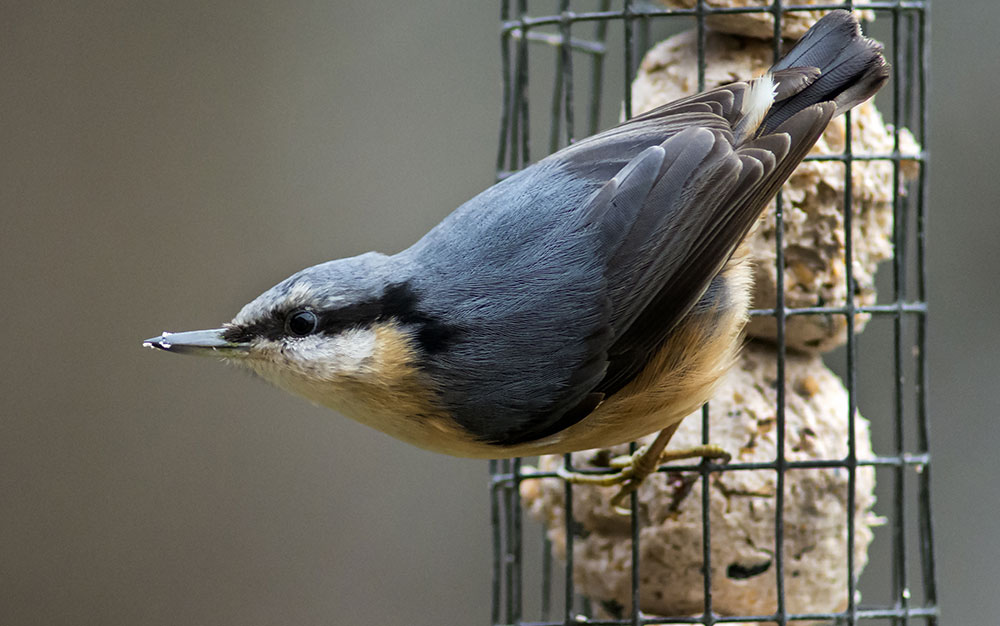Birds will happily live in your garden if you meet their three basic requirements: food, shelter for nesting and water for bathing and drinking. And you can entice a huge range of birds into your garden with just a few tweaks and some everyday household objects!
Food for Thought

Birds actually need feeding all year round – not just in winter. But they do need food that is higher in fat during the cold months.
Why not make your own fat balls at home? Mix one part lard with two parts feed to make them.
Simply pop them in your bird feeder or hang them from tree branches using string.
In summer, birds don’t need so much fat as they aren’t storing reserves for the winter.
For a summer feeder, take one large, open pine cone. Fill the bracts with tasty bird treats – nuts, fat, bread, cheese, stale cake or biscuits, bacon rind, boiled potato – whatever suitable scraps you can find.
Tie string around the top bracts and hang it up in the garden. Easy!

Tip:
Identify which birds visit
your garden and tailor your
menu to their tastes!
Birds also love crispy bacon rind, but if for some reason they don’t eat it soon after it’s put out, it will start to harbour bacteria that could give them salmonella poisoning. If you do try this, clean the bird table with a mild detergent every so often.
And if you’ve got a lawn – so much the better! The worms and insects that live in it are tasty grub for birds.
Water Off a Duck’s Back

Don’t forget to always keep fresh water for the birds in the garden to drink and bathe in.
Top it up regularly and break the surface ice if it freezes over. A pond, fountain or other water feature is best, as birds seem to be attracted to the moving water.
But if space is really tight, try a simple birdbath.
Place it near a tree or shrub as birds don’t like to be too exposed, and that way they can easily hop between bath and branches.
Home and Dry
If you install a nest box, be sure to turn it so the opening doesn’t face the prevailing weather conditions. You can also provide a range of boxes in different sizes for as many different bird species as possible.


Tip:
Make sure your bird box is
high up and can’t be easily
reached by predators!
Or you can help birds find good nesting material in late winter and early spring.
Fill a piece of netting with all manner of useful nest building materials and hang it outside so that the birds can easily pull bits through the net.
You can use straw, shredded paper, strands of wool and cotton and thin twigs.
One of the best things I have found, which house martins in particular seem to like, is shredded wheat-type breakfast cereal. They wet it with saliva and use it as a mortar for ‘plastering’ their nests. It gives the nests a modern ‘oatmeal’ look!
Birds also love to roost and nest year-round in evergreen shrubs and trees, especially protective spiky ones. Sparrows in particular love to live in hedging conifers.

Plant the Seed
Don’t forget that birds rely on plants to survive, either for the seeds as food, or for shelter to nest.
Make your garden as bird-friendly as possible by putting in a few of their favourites.
Thrushes and finches love Cotoneaster Horizontalis, that produces masses of berries for them to feast on in autumn. Honeysuckle is great for bullfinches as it provides nesting shelter as well as food.
Remember that leaving a few seed heads on your plants into winter will help provide an extra food source as well.


Leave A Comment